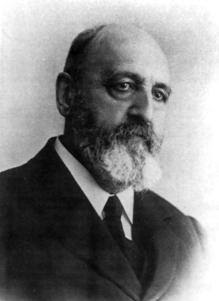Celebrating Leonardo Torres-Quevedo, Spanish inventor of the world’s first computer game
October 31st, 2012 | Published in Google Blog
What does a cable car in Niagara Falls have to do with the world’s first chess-playing machine? Surprisingly, both were inventions of Spanish civil engineer Leonardo Torres-Quevedo. Next week, as part of our ongoing effort to celebrate Europe’s computing heritage, we’re commemorating Torres-Quevedo’s legacy and his remarkable machine—"El Ajedrecista" (in English, "The Chess Player")—in partnership with the Telecommunication Engineering department of the Technical University of Madrid.

Photo thanks to Wikimedia Commons
Torres-Quevedo’s inventions span many fields. He was the second in the world to demonstrate wireless remote control, beaten to the post only by Nikola Tesla. His designs for airships were used by both the French and British during WWI. He was a global leader in cable car design, creating the “Spanish aero car” over the Niagara Whirlpool which, nearly a century on, remains a tourist attraction. However, his most remarkable achievements were in the field of automation, developing machines that are antecedents to what we now call computers and robots.
Torres-Quevedo’s ambitions were bold. As Scientific American proclaimed in 1915: “He would substitute machinery for the human mind.” In the 1890s, Torres-Quevedo built a series of mechanical devices that solved algebraic equations. In 1920 he wowed a Paris audience with an electromechanical arithmometer with a typewriter attachment. You simply typed a formula—say, “24x48”—and the machine would calculate and automatically type the answer “=1152” in reply.
But El Ajedrecista, an algorithmically powered machine that could play an end-game of chess against a human opponent completely automatically, is his most notable creation. Although it’s a far cry from Deep Blue, El Ajedrecista can lay claim to being the world’s first (analog) computer game.

Torres-Quevedo’s inventions span many fields. He was the second in the world to demonstrate wireless remote control, beaten to the post only by Nikola Tesla. His designs for airships were used by both the French and British during WWI. He was a global leader in cable car design, creating the “Spanish aero car” over the Niagara Whirlpool which, nearly a century on, remains a tourist attraction. However, his most remarkable achievements were in the field of automation, developing machines that are antecedents to what we now call computers and robots.
Torres-Quevedo’s ambitions were bold. As Scientific American proclaimed in 1915: “He would substitute machinery for the human mind.” In the 1890s, Torres-Quevedo built a series of mechanical devices that solved algebraic equations. In 1920 he wowed a Paris audience with an electromechanical arithmometer with a typewriter attachment. You simply typed a formula—say, “24x48”—and the machine would calculate and automatically type the answer “=1152” in reply.
But El Ajedrecista, an algorithmically powered machine that could play an end-game of chess against a human opponent completely automatically, is his most notable creation. Although it’s a far cry from Deep Blue, El Ajedrecista can lay claim to being the world’s first (analog) computer game.